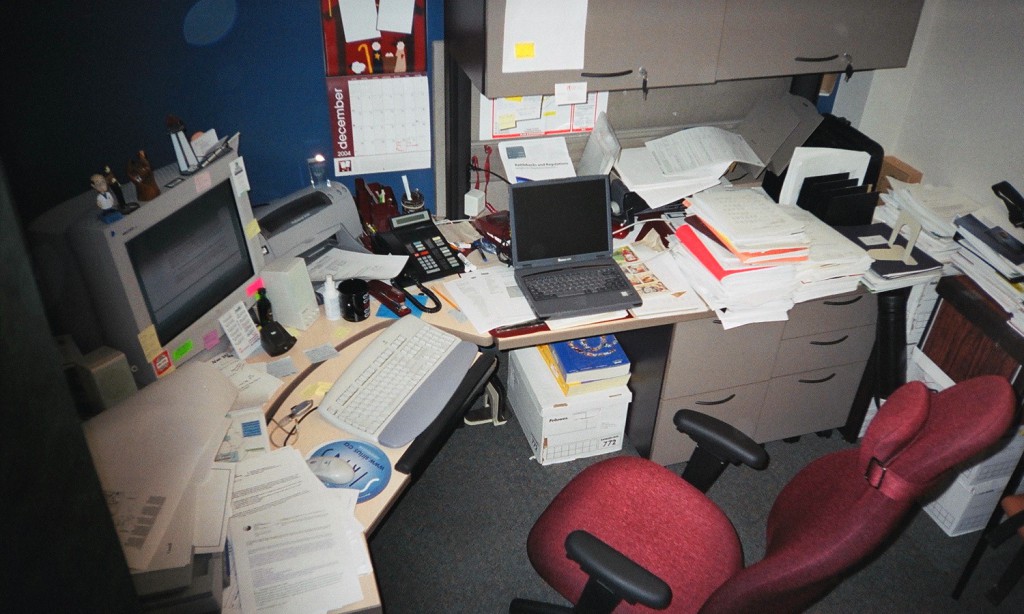A climate-controlled office, your very own workstation, and a good work-conducive environment—what can possibly go wrong? That a corporate office is safer compared to an industrial workplace– that has hazardous equipment and chemicals around– is only a myth until safety issues are seen in close quarters. The comparatively convenient office’s environment has many hidden dangers that need to be recognized and addressed.
Exposure to heat and radiations
It’s not uncommon for outdoor workers to battle heat stress. Long hours in the sun take a toll on construction crews, farmhands, roofers, and pavers et al. But the office environment too—though with sufficient protection from the outside heat—is affected by indoor heat caused by computers and other electronic devices.
Employees spending long hours in front of their computers are exposed to thermal and low energy non-ionizing radiations. These radiations are said to cause fertility issues, DNA fragmentation, skin burns, rashes and other skin related problems.
Although OSHA does not have a specific standard for extremely low frequency radiations in computer workstations, the existing OSHA standards on radiation exposure apply to all office setups.
Musculoskeletal dangers
Bad posture or being in the same position for a long period gives rise to muscular disorders and pain in tendon and nerves, which is popularly known as Work related Musculoskeletal Disorders (WMDs). The symptoms are seen in workers in corporate offices and industrial setups alike (heavy lifting and material handling.)
Holding the mouse for a long period, sitting on a chair with straight neck and shoulders, or performing controlled movements with wrist or the arm for a long period can lead to WMDs. OSHA’s eTool illustrates simple ways to make your computer workstation safe and comfortable.
Prolonged use of keyboard and mouse can lead to Carpal Tunnel Syndrome. Image wikipedia
Poor ventilation and cross-contamination
Although employees in an office environment are not inhaling silica or the wood dust, they are exposed to airborne diseases. Germs flowing in the air, cleaning materials, mold in the building due to moisture and other pollutants due to poor ventilation, are enough to make anyone sick, affecting productivity.
The problem of cross-contamination does not receive much attention in commercial offices. Peter Sheldon, vice president of operations for Coverall Health-Based Cleaning System in Boca Raton, Florida says, “There was a time when it wasn’t a big problem. Maybe you’d catch the occasional flu, but you didn’t see the things you see today. Community-acquired infections are happening now in what we used to consider low-risk environments.”
Educating employers and owners of business spaces about the risks of cross-contamination can help in reduced absenteeism and increase savings.
Slip, trip, and fall injuries
Slips, trips, and falls lead to 15 percent of all accidental deaths in general industry and are second only to motor vehicles fatalities.
In offices, employers as well employees should be mindful of obstacles that cause slipping and tripping hazards. Office hazards like cluttered walkways, files and boxes lying at random, water spills on floor, and loose cords posing fire as well as tripping hazards can lead to serious injuries. OSHA standards for walking/working surfaces apply to all permanent places of employment, except where only domestic, mining, or agricultural work is performed.
Cluttered workstations like this can lead to slip, trip, and fall accidents. Image by: James Emery
These accidents not only affect companies directly, but also result in indirect losses due to reduced productivity and workdays. Keeping this in mind, more and more organizations are actively engaging their employees in participatory activities to address safety issues. Field-inspired safety protocols are now migrating to the office to address hazards posed by seemingly harmless things like dripping umbrellas, high heels and hot coffee.
A large workforce of 8,300 workers at Skanska AB, the US arm of Swedish builder, perform stretch and flex everyday for five minutes to prevent soft tissue injuries like sprains. Not just those on the ground, 1,400 employees who work in company’s corporate office also carry out the activity on daily basis. At Chevron Corporation, workers have the leverage to halt an activity which they consider dangerous, using a stop card.
